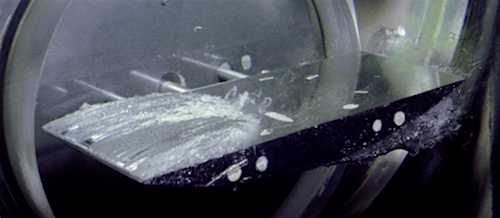 |
- A typical partial cavity attached to the leading edge of a hydrofoil.
- Flow is from left to right.
- The cavity is filled with water vapor whereas the rest of the flow is liquid water.
- The cavity is called a partial cavity since its length is smaller than the chord length of the foil.
- This picture was taken in the LEGI cavitation tunnel.
|
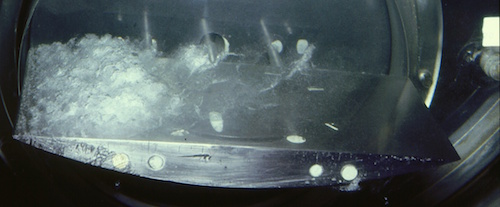 |
- Depending upon the operating conditions (flow velocity, angle of attack,
pressure...), the cavity may be filled with a liquid / vapor mixture
instead of pure vapor.
- The closure region of a cavity is more or less unsteady and fluctuating.
|
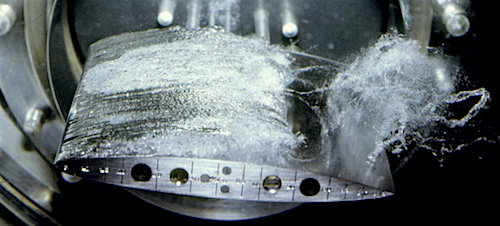 |
- This is a typical cavitation instability known as cloud cavitation.
- The cavity sheds periodically a cavitation cloud.
- The instability is controlled by a re-entrant jet which is a counter-current liquid flow moving along the wall.
|
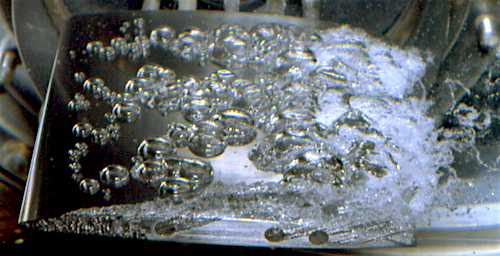 |
- The cavity may also be formed of more or less isolated bubbles traveling with the liquid flow.
- This is traveling bubble cavitation.
- This type of cavitation depends upon the water quality i.e. of the nuclei content.
|
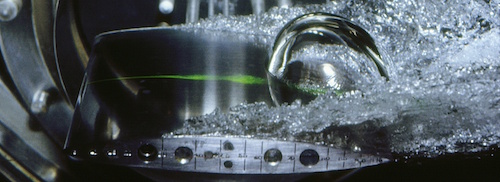 |
- Nuclei are almost invisible microbubbles contained in the liquid.
- When
such a microbubble is traveling through a low pressure region (here the
upper side of the hydrofoil), it may "cavitate" i.e. grow explosively.
- A macroscopic bubble is then formed.
|
1 2 3 4
|









